
-
@cbrandin - "if you are saying the effective Q offset = QP * (Matrix_Value / 16) for each entry, then right."
Not quite, the effective Q is not the QP value, it's based on the Qstep value found in the 51-entry table in the PDF I linked above. Effective Q = (Qstep * 16) / Matrix_Value. I definitely agree about the need to use the same Scaling Matrix for both I-fields and P-fields in HBR mode. Note, however, that the P-field in the initial I-frame of each GOP uses the Inter-matrix of the Scaling-I table, rather than the Intra-matrix of the Scaling-P table!
-
@LPowell - I can see some differences - Flow Motion is a little sharper, and the 444 stuff has somewhat smoother gradations. I think it depends on the subject. The one you show is pretty contrasty and monochromatic. Other subjects may show more or less of a difference.
Your point about matrices not being interchangeable is well taken. Changing matrices changes everything else too, and it's a lot of work to get right!
-
@lpowell - I think we are just having a terminology mismatch and that we essentially agree. There's QP, as PTool sees it, header Q, macroblock Q offsets, individual matrix Q modifiers, etc... - it gets a little confusing. My formula is to calculate the offset value used to retrieve the value from the table, not the value itself.
-
hello... i needed to see for myself, so here is my comparison of the two matrices:
flomotion 2.02 & Valkyrie '444 Soft',
both 3gop 24p high bitrate patches
if you were to zoom into details (such as the ingmar bergman box set, or butch cassidy and the sundance kid case...)
u can see how the two are different, hope this helps!
24p mode, 14mm@2.5, 400iso, cloud WB,
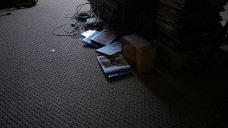
 14-444.png1920 x 1080 - 3M
14-444.png1920 x 1080 - 3M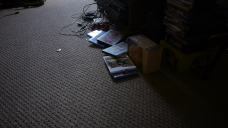
 14-flo.png1920 x 1080 - 4M
14-flo.png1920 x 1080 - 4M -
@cbrandin No, I think the level of indirection in the Qstep table makes a big difference. In the H.264 spec, QP is just an index into the Qstep table, which contains the actual Q factors. Qstep doubles each time QP is incremented by six. So rather than increasing linearly with QP, effective Q increases exponentially.
-
Lpowell, regard the scaling matrices, I wasn't aware of that. Thank you for the information. After trying both settings my self I see advantages and disadvantage on both FL and soft 444 so to speak. But I some how tend to like the feel of AN 444 soft. btw, the fighting comment was not meant to you alone, so no hard feelings.
Flaschus, Some how the cables in the background seem overly sharpened on AN? Tend to like the FL in that regard. Than again.. There seem to be less noise in the shadows regard the AN. Confusing stuff...
-
@lpowell - right, I agree. I think the confusion was over the term "Q", I meant it as the offset and you meant it as the table value. I should have called it QI (Q Index), or something like that.
-
An avid lurker here -
Can somebody point me to the discussion where it seems to have been explained that 25p is really 25i ?
-
@flaschus Best test shots I've seen yet. Thanks!
-
@lpowell - I looked up the reference you linked. My formula calculates what he calls QP. It's a little confusing because that number is a product of various parameters included in H.264 headers and the scaling matrix. And then there is PTool's "Quantizer" Parameter. Let's agree that the index into the table is "QP", the indexed entry is "Q", that PTool's parameter is "Base QP", the frame's base QP is "Frame QP", and that the macroblock QP offset is "macroblock QP offset" - that should eliminate the confusion.
-
@cbrandin Agreed. What's not explicit in that reference is a description of how the Scaling Tables are applied in calculating the effective Q. Here's a link to a paper that documents how Qstep is modified by each Matrix_Value :
-
EDIT: VK doesn't like deleted posts, so PLEASE NOTE: The conclusions below were based on artifacts introduced by the photo editing software in the course of combining two images. KINDLY DISREGARD.
==============================
The two Flaschus shots are not quite identical, which may have influenced the result, but if you put them side by side, the most glaring difference is in the carpet -- it's a darker shade in FM than Valkyrie, and FM appears to pull out more detail, maybe for that reason. The difference isn't subtle.
When you start raising the blacks to get shadow detail, there appears to be more noise in Valkyrie. Push it to an extreme, and there's more apparent macroblocking in Valkyrie.
Again, am not taking sides, just trying to use my eyes. Maybe the engineers and colorists among us will have more useful or valid observations.
-
I have noticed people on this forum are getting a little lazy and are waiting for others to do the testings of the various settings for them. Sometimes you need to generate a little bit of controversy to get their juices flowing again. That's what I did by posting the two pictures from FM2 and AN-444 earlier knowing that they were not a fair comparison. So as I promised, below, I have included the frame captures of FM2 and AN nebula 444 in as close of a conditions you can get using one GH2. top 6 are AN-Nebula-444 and bottom 6 are FM 2.02. The difference in timing is 5 minutes which is the time I needed to reload the second setting. Conditions and camera settings are all the same (Panasonic 14-140 lens, STD film mode, straight out of camera, Sunny 11 AM, 95 degree heat). I have used Nature mode for FSH/SH. Names of the pictures indicate what they are. As you can see, the differences are not as significant as the pictures I posted earlier. They are both very good settings.
One observation for @LPowell, I have noticed that when using longer zooms (100-300 specially with ETC on), FM 2.02 looses more detail and quality than say Cluster settings as you can see from the ETC pictures I posted below. I have noticed it in other occasions that I have tested. May be that is something you can look into for a future update. Hope this is more helpful.
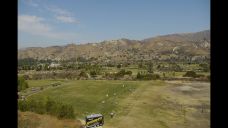
 AN_Neb_444_24H.png1920 x 1080 - 4M
AN_Neb_444_24H.png1920 x 1080 - 4M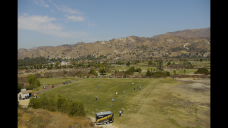
 AN_Neb_444_HBR.png1920 x 1080 - 4M
AN_Neb_444_HBR.png1920 x 1080 - 4M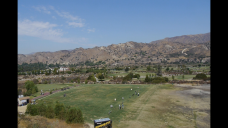
 AN_Neb_444_SH.png1280 x 720 - 2M
AN_Neb_444_SH.png1280 x 720 - 2M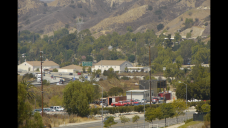
 AN_Neb_444_24H_140zoom_freeway.png1920 x 1080 - 5M
AN_Neb_444_24H_140zoom_freeway.png1920 x 1080 - 5M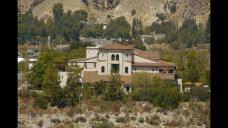
 AN_Neb_444_24H_140zoom_clubhouse.png1920 x 1080 - 5M
AN_Neb_444_24H_140zoom_clubhouse.png1920 x 1080 - 5M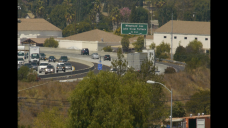
 AN_Neb_444_24H_140zoom_freeway_ETC.png1920 x 1080 - 4M
AN_Neb_444_24H_140zoom_freeway_ETC.png1920 x 1080 - 4M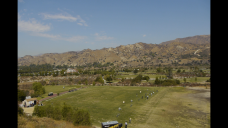
 FM2_24H.png1920 x 1080 - 3M
FM2_24H.png1920 x 1080 - 3M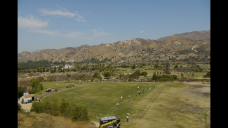
 FM2_HBR.png1920 x 1080 - 3M
FM2_HBR.png1920 x 1080 - 3M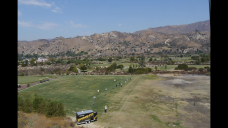
 FM2_SH.png1280 x 720 - 2M
FM2_SH.png1280 x 720 - 2M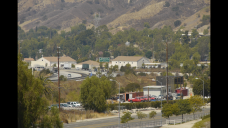
 FM2_24H_140zoom_freeway.png1920 x 1080 - 4M
FM2_24H_140zoom_freeway.png1920 x 1080 - 4M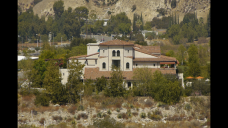
 FM2_24H_140zoom_clubhouse.png1920 x 1080 - 5M
FM2_24H_140zoom_clubhouse.png1920 x 1080 - 5M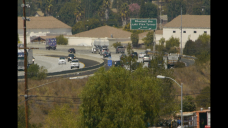
 FM2_24H_140zoom_freeway_ETC.png1920 x 1080 - 4M
FM2_24H_140zoom_freeway_ETC.png1920 x 1080 - 4M -
@Zaven13 Thanks for the comparison shots. Something looks amiss in the last shot, however, FM_24H-140zoom_freeway_ETC, that's not present in the other shots. Atmospheric distortion from the auto exhausts, perhaps?
-
@Zaven13 Chapeau! What I see is that I hardly see anything. There isn't much of a difference between the two settings which illustrates my point that a GH2 stays a GH2. Where is this landscape btw?
-
@LPowell - Most of the decoders I've seen take the PPS QP value, add the macroblock QP offset, multiply that by the matrix entry, shift right 4 (divide by 16), and use the result to look up the Q value from the quantization table. This is done for each matrix entry in the frequency domain. This is a somewhat simplified explanation as the PPS QP entry is actually the QP value -26 (I don't know why they did this). Offhand, I don't remember the exact sequence, but it's close to what I described. The JM decoder probably doesn't do it that way because it is not optimized at all - but practical decoders typically work essentially that way. The design of the H.264 standard takes 16 bit processors into account so that CODECS can be as efficient as possible.
So, to recap - A frame QP value (frames in the GH2 are single slices) is added to a QP offset for a macroblock, that value is multiplied by the appropriate quantization matrix value, the product is divided by 16, then that value becomes the index into the quantization table.
-
-
Onionbrain (DrewNet) made some big statements both in his original promo video of Apocalypse Now and here in print http://www.personal-view.com/talks/discussion/comment/81924#Comment_81924 "As a side note -- having viewed this stuff on calibrated production monitors and large screen projections -- I will tell you and everyone without qualification that this is the best looking footage I've ever seen from a hacked GH".
I'd like to see actual evidence of what OnionBrain is seeing here to backup these claims. If you are going to be that outspoken on promoting this patch, then you owe it to the lesser experience users here (myself included) to provide such proof. I'm not discounting the work people have done here, but we need to see what you see rather than just take your word for it, else it becomes just hype.
-
@kodakmoment. The landscape is the Angeles National golf course in Sunland, California, part of Los Angeles county. You are right. The differences are insignificant. The only mode that the difference is slightly more visible is 24p.
-
How about comparing it to Sanity as well since there's a big difference, filesize wise?
-
I'm still relatively new to all of this but my understanding is that under ideal (well lit) conditions there will be generally less discernible differences between many of these patches (settings).
-
@Zaven13 Yes, thanks again for your test! Southern California, that's what I thought.
-
This is becoming messy. The quantisation process and matrices are better described by one of h264's world specialist's - Ian Richardson. If any of our thread readers want to get deep into the theory and calculations - simply read his books /visit his site at http://www.vcodex.com/h264.html. Theres links and threads also in p-v.
ND in France on a iphone. Happy shooting.
-
@SuperSet. Good idea. You lucky guy... This forum just nominated you to do that testing...
-
@Zaven13 Thanks for a better comparison. The difference between FM and AN are noticeable in my eyes, thanks for taking the time to post up these screen shots btw.
Howdy, Stranger!
It looks like you're new here. If you want to get involved, click one of these buttons!
Categories
- Topics List23,990
- Blog5,725
- General and News1,353
- Hacks and Patches1,153
- ↳ Top Settings33
- ↳ Beginners256
- ↳ Archives402
- ↳ Hacks News and Development56
- Cameras2,367
- ↳ Panasonic995
- ↳ Canon118
- ↳ Sony156
- ↳ Nikon96
- ↳ Pentax and Samsung70
- ↳ Olympus and Fujifilm101
- ↳ Compacts and Camcorders300
- ↳ Smartphones for video97
- ↳ Pro Video Cameras191
- ↳ BlackMagic and other raw cameras116
- Skill1,960
- ↳ Business and distribution66
- ↳ Preparation, scripts and legal38
- ↳ Art149
- ↳ Import, Convert, Exporting291
- ↳ Editors191
- ↳ Effects and stunts115
- ↳ Color grading197
- ↳ Sound and Music280
- ↳ Lighting96
- ↳ Software and storage tips266
- Gear5,420
- ↳ Filters, Adapters, Matte boxes344
- ↳ Lenses1,582
- ↳ Follow focus and gears93
- ↳ Sound499
- ↳ Lighting gear314
- ↳ Camera movement230
- ↳ Gimbals and copters302
- ↳ Rigs and related stuff273
- ↳ Power solutions83
- ↳ Monitors and viewfinders340
- ↳ Tripods and fluid heads139
- ↳ Storage286
- ↳ Computers and studio gear560
- ↳ VR and 3D248
- Showcase1,859
- Marketplace2,834
- Offtopic1,319








